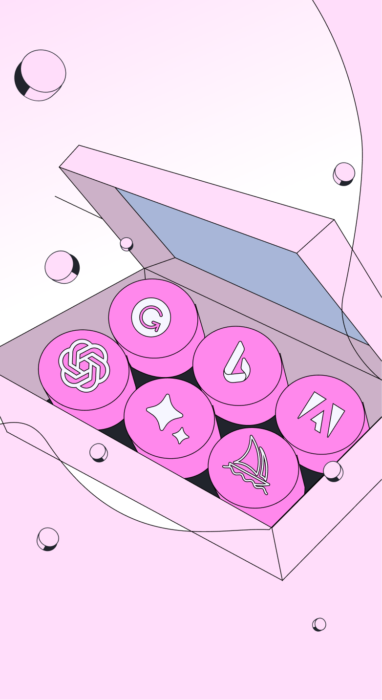Today’s Menu 🥠
- Improving ChatGPT’s Context Window
- Getty’s New Gen AI Image Feature
- 5 Trending AI-Powered Tools
- Abe Lincoln Comes Out Of Hibernation
Fast Snacks 🥡
Former Twitter CEO Raises $30M
Parag Agrawal, CEO of Twitter for a year before Elon Musk took over, recently raised about $30 million in funding for an artificial intelligence startup…
 OpenAI Claims NYT Tricked ChatGPT Into Copying Articles
OpenAI Claims NYT Tricked ChatGPT Into Copying Articles
In a blog post, OpenAI said the Times “is not telling the full story” – claiming that the Times manipulated prompts to include regurgitated excerpts…
 The Coolest Tech Release Of 2024 (sponsored)
The Coolest Tech Release Of 2024 (sponsored)
Something is coming on January 9th that will fundamentally change the way humans and machines interact called: rabbit r1. Grab Rabbit’s first AI device – r1 – your new pocket companion…
Is GPT-4’s Laziness Issue Going To Improve?

Last year, as time went by, ChatGPT was seemingly doing less and less with with every response.
Users were quick to blame OpenAI for a bad update, but they responded by saying they hadn’t changed the model and the lackluster responses weren’t intentional.
Supposedly, ChatGPT had a case of winter depression and just didn’t feel like it.
Issues like this become a serious problem when managing a project with GPT-4. Thankfully, there’s a solution.

First of all, let’s understand why people consider GPT “lazy”.
It needs help to understand!
Many users say that when they prompt ChatGPT, answers are not as relevant or detailed as before. “Laziness”, in this case, is used in its everyday meaning: GPT-4 does not seem to be putting much effort in coming up with the best answer.
This results in more and more prompts to put it in the right direction.
But is it really “laziness?”
To say someone is lazy in real life, we need to make sure that that person understands the work at hand.
And it’s no different here: To give a detailed and helpful answer, ChatGPT needs to understand what we are up to.
What clues does it have for accomplishing the job as you see it?
Above all, GPT needs to understand our intentions.
In short: it needs to read into what you’re ask for, know you, and remember your preferences.

Context Windows & Knowledge Bases
To give a good response to a detailed prompt, GPT-4 needs a large context window. With the latest updates, GPT-4 started to use a 32K context window.
The larger your context window, the more confused GPT can get.
Why?
Because it has more info to sort through.
This is why Knowledge Bases are getting more important in 2024.
When GPT was limited in terms of context window, it did not need much interpretation with what it has.
Now, it does.

Knowledge Bases personalize GPT-4 in a way that remembers your previous conversations, and can be fed with specific information.
The combination of a Knowledge Base with a large context window offers two advantages:
- It makes your experience much more reliable, even though model gets updates in the future.
- It becomes a perfect tool for project management, because it knows your past work.
With this link, you can find a web app with 128K context window and Personal Knowledge Base. Plus, it can be trained with PDFs, too.
A good solution to have a hard-working assistant instead of being concerned about its performance.
Keymate Ultimate Is The Ultimate Tool For Your Projects
- GPT-4 128K with Google Search & Personal Knowledge Base.
- No ChatGPT Plus subscription needed.
Pay $20 instead of $60 for the first month!
Snack Quiz: Choose The Real Image 🔍

Can you tell which image is real?
- A. Image One 👆
- B. Image Two 👇
Login or Subscribe to participate in polls.

Getty & Nvidia Bring AI To Stock Photos

Getty Images and Nvidia have expanded their AI collaboration, introducing Generative AI by iStock, a text-to-image platform focused on creating stock photos.
Unlike Getty Images, which caters to multiuser enterprises, Generative AI by iStock is designed for individual or single-seat users.
Utilizing Nvidia’s Picasso model, the platform was trained exclusively on Getty’s creative and iStock’s stock photo libraries, avoiding the inclusion of trademarks or known personalities from Getty’s editorial image library.
The platform enhances efficiency in finding precise stock photos for small and mid-sized businesses.

Priced at $14.99 for 100 prompts, each prompt generates four images.
Plus, contributors whose content was pulled for training the model can participate in a revenue-sharing program – much like how Adobe Stock handled things.
Soon, iStock will see exciting features like Inpainting and Outpainting providing users with additional creative capabilities.
5 Trending AI-Powered Tools
60secsite: Create a custom landing page for your SaaS, product, or Shopify app in 60 seconds.
AI Suggests: A virtual content AI assistant that generates ready-to-yse content.
Automata: Convert your marketing assets into content for your repurposing & distribution strategy.
Forefront: A new AI assistant that can chat with files, browse the internet, share chats, and much more.
Fliki: Create text-to-video and text-to-speech content with AI powered voices in minutes.
AI Images Made By AI Image Generators

2023 wasn’t a good year for Buzz Lightyear

1928 high school reunion was more lively than normal

Abe Lincoln coming out of hibernation
Correct Answer ✔️

Share on Pinterest




